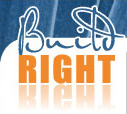Asbestos

Friable asbestos can be reduced to powder when squeezed. It is often found as insulation (also known as lagging) which was wound around old water pipes and steam pipes or in fibrous board. This type requires a Class A licence to remove the asbestos if the amount exceeds 10 square metres. An experienced tradesperson can remove asbestos if there is less than 10 square metres in fibrous board.

Non-friable asbestos does not become powdery under pressure. It is found in bonded asbestos cement (AC) sheet, eaves lining, some floor finishes and vinyl tiles and has a low risk of releasing fibres. A Class B licence is required to remove this asbestos in AC sheet.
If specialist contractors are required, they will need to carry out their work to stringent standards which may include:
- a report of the air quality in the immediate area
- the provision of full protective clothing and respirator to all staff
- the neat stacking and wrapping of the removed asbestos in plastic sheeting which must then be securely sealed and bound
- the disposal of the asbestos at a licensed disposal area
- a full report which establishes air readings before removal commences, progressively as the work is being done and at the completion of the removal.
In many cases, exhaust fans and other mechanical means are used to assist in maintaining the air quality of the immediate area and also the neighbouring area.
Note:
In commercial projects the cutting, handling and installation of medium density fibreboard (MDF) is being treated with as much caution and respect as asbestos. This is due to the urea/formaldehyde resin which results in exposure to both wood dust and formaldehyde vapour.
The state safety authorities have further information on the health hazards of wood dust.
